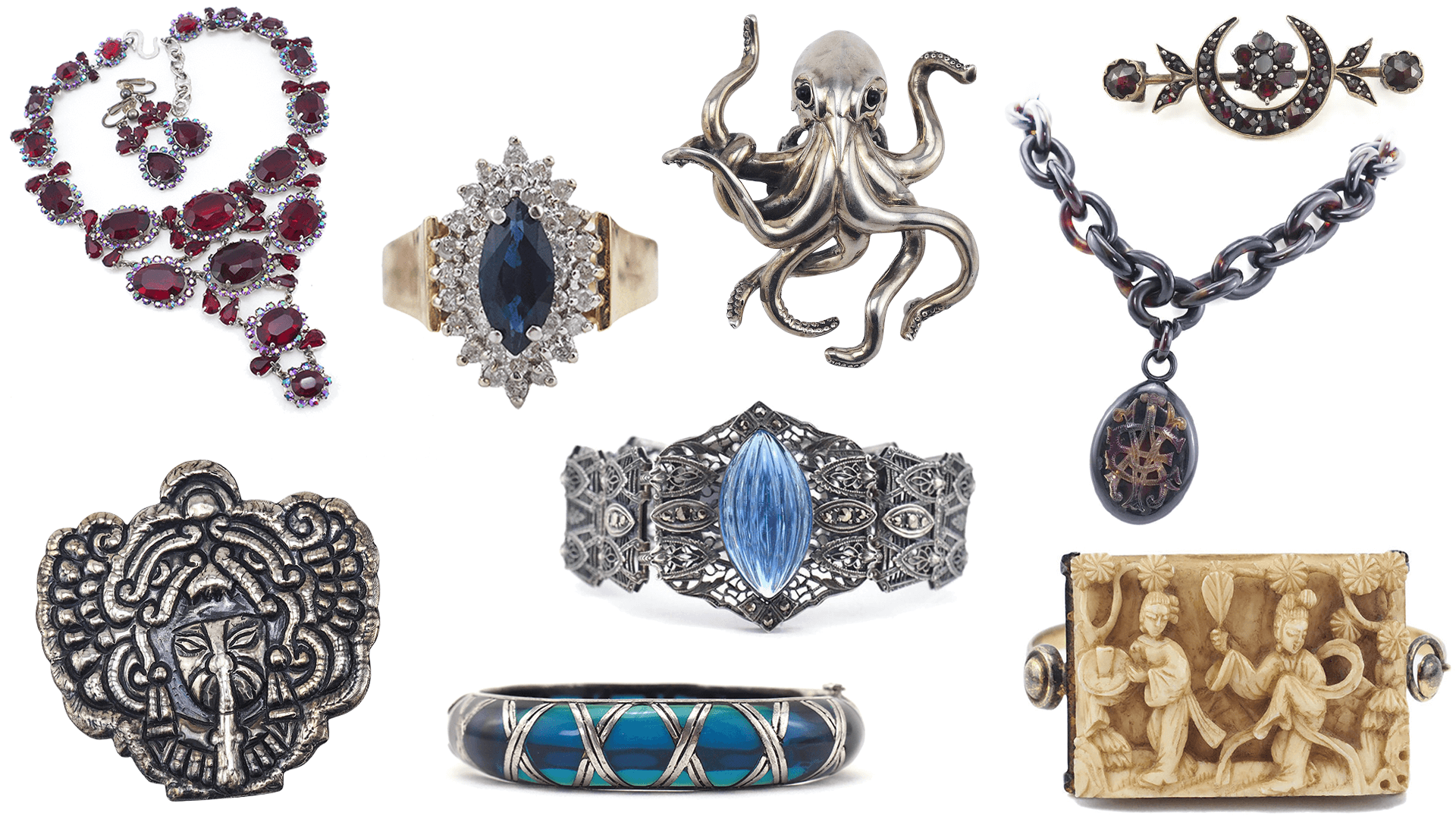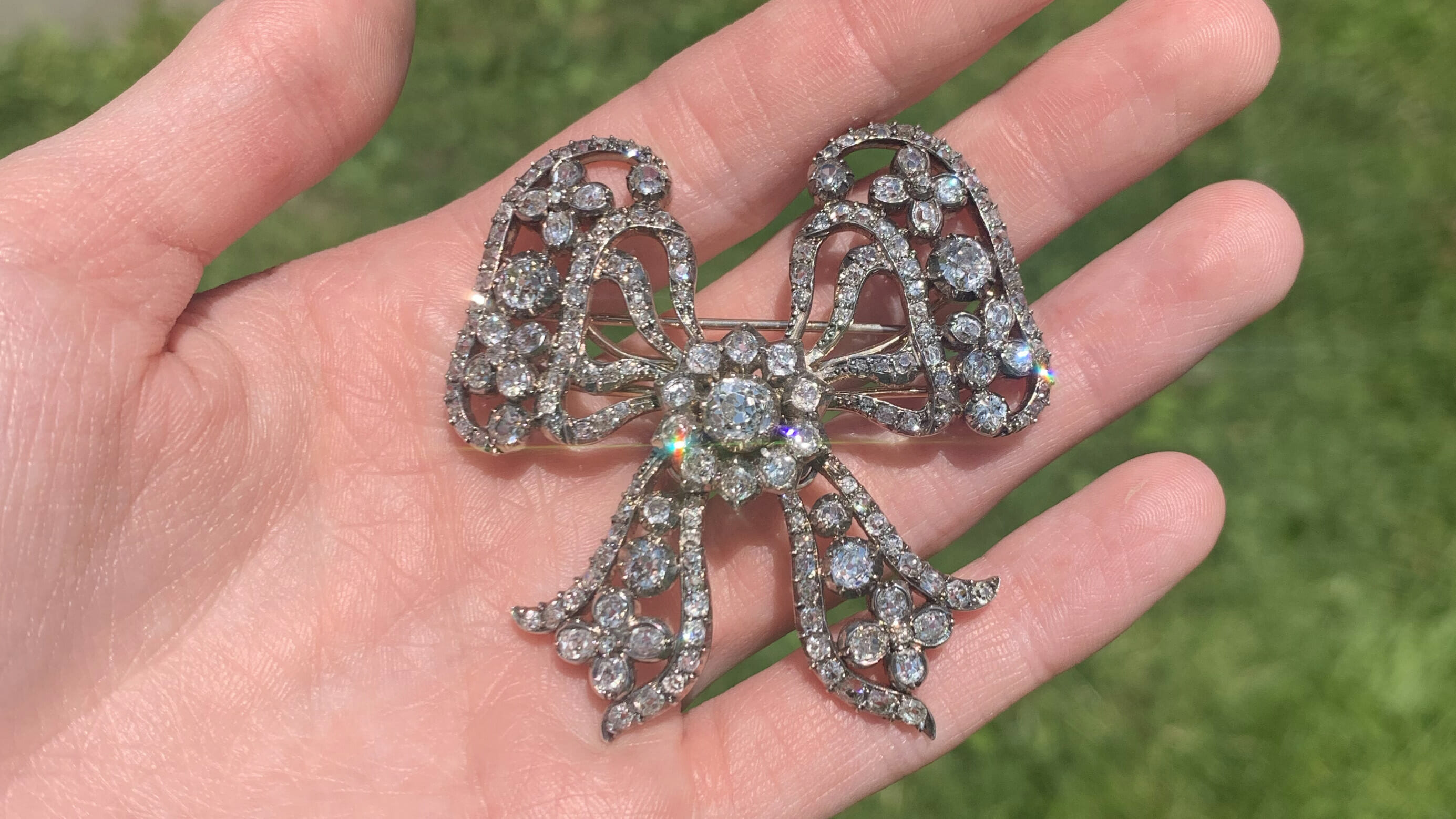Discover artistic antique engagement rings austin with exceptional charm.
Unveiling the Allure of Antique Fashion Jewelry: Recognizing Its Different Styles
Vintage precious jewelry serves as an exciting home window into the past, using understandings right into the cultural and artistic nuances of different eras. Each style, from the emotive intricacies of Victorian fashion jewelry to the fluid style of Art Nouveau, envelops the views and developments of its time. The subsequent opulence of Edwardian layouts and the striking kinds of Art Deco further illustrate this development. Yet, as we explore these unique styles, one must take into consideration exactly how the importance of these items goes beyond mere visual appeals, welcoming a deeper exam of their historical and psychological vibration.
Victorian Age Jewelry
The allure of Victorian Age precious jewelry hinges on its elaborate workmanship and profound importance, reflecting the social worths and emotional currents of the time. Covering from 1837 to 1901, this period was identified by a fascination with nature, grieving, and romanticism, which greatly influenced precious jewelry style. Jewelry items commonly included sophisticated concepts, such as blossoms, pets, and elaborate lacework work, crafted from products like gold, silver, and gemstones.

In addition, the technical innovations of the Industrial Change permitted more intricate layouts and the usage of new products, such as rubies and pearls. This democratization of luxury made fashion jewelry a lot more obtainable to the middle class, bring about a proliferation of varied designs. Generally, Victorian Age jewelry continues to be a fascinating testimony to the complex interaction of art, emotion, and social standards during a transformative historical period.
Art Nouveau Creations
Characterized by its organic kinds and flowing lines, Art Nouveau precious jewelry emerged in the late 19th and early 20th centuries as an action to the mass production and rigid styles of the preceding ages. This imaginative motion looked for to accept nature, incorporating aspects such as flowers, leaves, and creeping plants right into the styles. Art Nouveau pieces typically included unbalanced make-ups, stressing a sense of motion and fluidness.

Making use of ingenious methods, such as enameling and the unification of glass, additional distinguished Art Nouveau fashion jewelry from its precursors. The motion ultimately celebrated uniqueness and artistic expression, making each item a distinct work of art. Therefore, Art Nouveau creations remain to astound collectors today, embodying an unique blend of style and nature that remains classic.
Edwardian Period Pieces
Throughout the very early 20th century, the Edwardian period experienced a remarkable development in precious jewelry style, noted by a focus on beauty and opulence. This period, named after King Edward VII, covered from 1901 to 1910 and is defined by the elaborate workmanship and delicate appearances that specify its items.
Fashion jewelry from this duration usually includes platinum setups, a material that permitted finer and even more complex styles, enhancing the play of light versus the gems. The usage of rubies was widespread, typically go to these guys prepared in elaborate motifs such as lacework and flower patterns. Edwardian precious jewelry likewise accepted the use of pearls, which added a soft, luminous top quality to the pieces.
Breastpins, necklaces, and earrings came to be famous, showcasing the era's penchant for charming and whimsical layouts. The "garland design," which entailed making use of ribbon-like motifs, was specifically popular, reflecting the naturalistic influences of the time. Furthermore, pieces commonly bundled colored gemstones to produce striking contrasts, further raising their aesthetic appeal. Generally, Edwardian period precious jewelry continues to be a testimony to a time when creativity and class ruled supreme in the world of accessory.

Art Deco Layouts
Arising in the 1920s and prospering through the 1930s, Art Deco develops stand for a bold departure from the ornate styles of previous ages, embracing geometric shapes, streamlined types, and lively colors. Characterized by a sense of modernity, this style activity drew ideas from different resources, consisting of cubism, ancient Egyptian themes, and the vibrant aesthetics of the maker age.
Art Deco jewelry usually includes strong contrasts, incorporating materials such as platinum, gold, and tinted gemstones to create striking aesthetic impacts. Using elaborate patterns and themes, including zigzags, chevrons, and flower components, showcases the craftsmanship of the time. Significantly, the age also saw the introduction of brand-new methods such as enamel work and making use of artificial rocks, increasing the possibilities for innovative expression.
Parts from this duration frequently exhibit beauty and refinement, making them extremely looked for after by collection agencies and fanatics alike. Art Deco fashion jewelry offers not just as a reflection of its time but also as a testimony to the read the article enduring charm of its innovative styles. It holds a significant place in the history of antique jewelry, celebrated for its unique design and cultural value.
Retro and Mid-Century Styles
Retro and Mid-Century styles, spanning from the 1940s to the 1960s, represent a vivid duration in jewelry design that reflects the positive outlook and innovation of post-war society. antique jewelry. Characterized by strong designs and using cutting-edge products, this period saw a separation from the detailed describing of previous styles, welcoming rather a much more playful and exuberant visual
Jewelry from this duration view publisher site frequently features huge, vibrant gems, including citrine, aquamarine, and tourmaline, embeded in yellow gold-- a product that got importance due to its cozy tones and pliability. The styles frequently integrated wayward motifs such as floral patterns, abstract forms, and geometric forms, capturing the spirit of modernity and flexibility that specified the period.
Remarkable developers like Cartier and Van Cleef & Arpels made considerable payments to Retro and Mid-Century styles, producing items that combined craftsmanship with creative flair. In addition, the impact of Hollywood beauty during this time around led to an enhanced demand for declaration precious jewelry, making it an essential device for the trendy elite (antique jewelry). Accumulating Retro and Mid-Century jewelry today provides lovers a peek right into a transformative period in history, identified by creativity and social advancement
Verdict
The expedition of antique jewelry discloses a lively spectrum of designs, each symbolizing the cultural and imaginative nuances of its particular period. From the emotional deepness of Victorian designs to the cutting-edge spirit of Retro pieces, these artefacts work as vital historic narratives. Understanding the unique features of each duration improves recognition for the workmanship and value behind these adornments, solidifying their condition as not just ornamental things but likewise useful connections to the past.